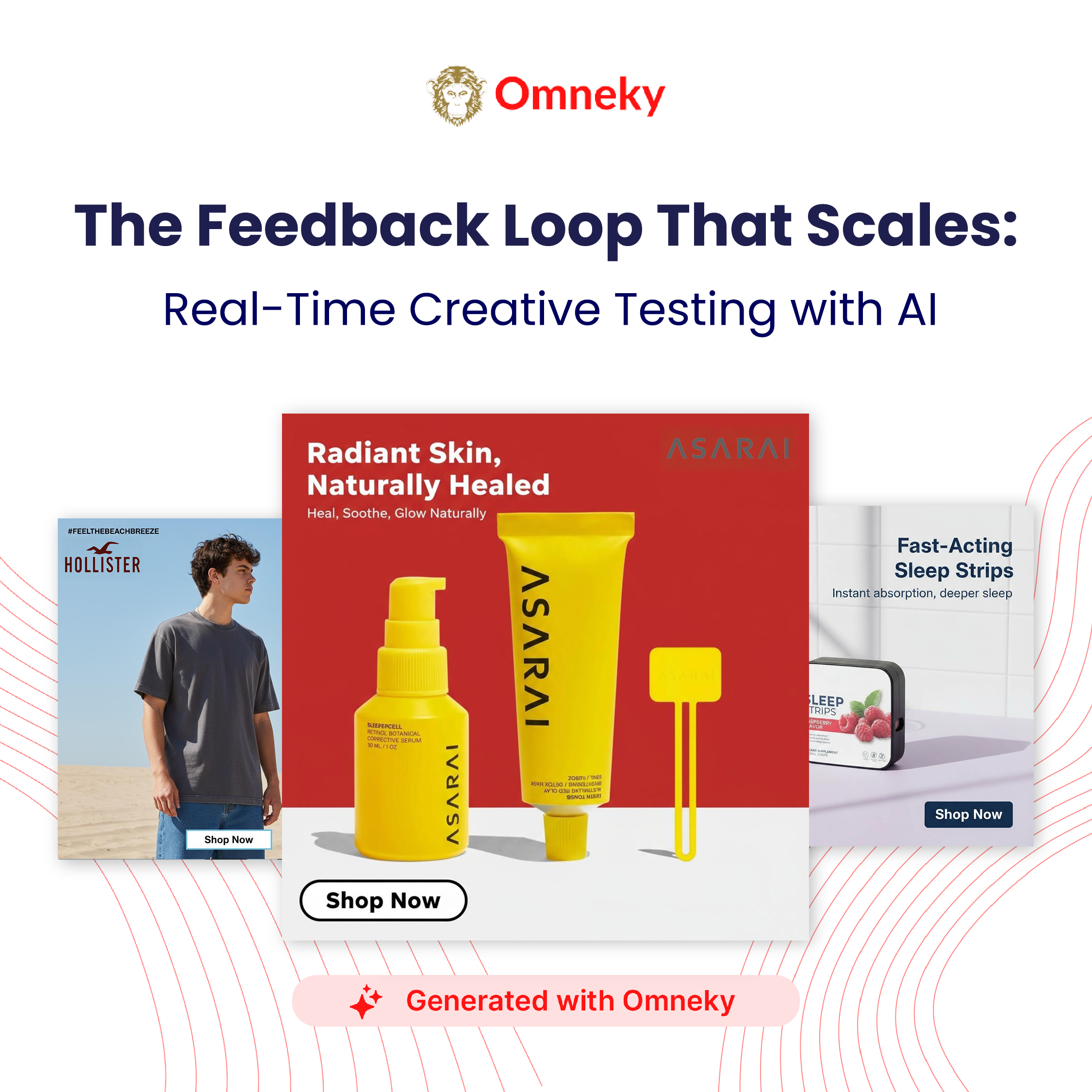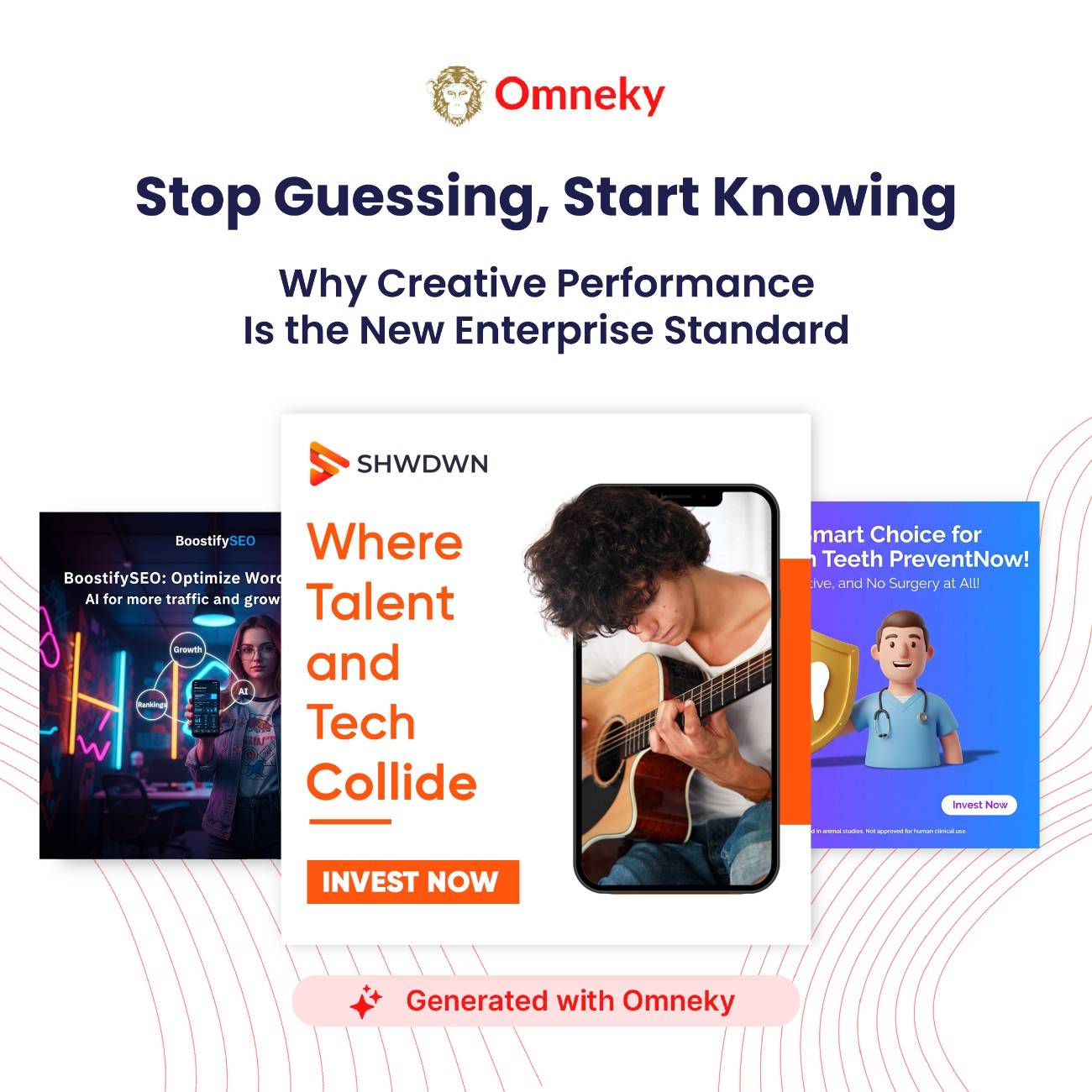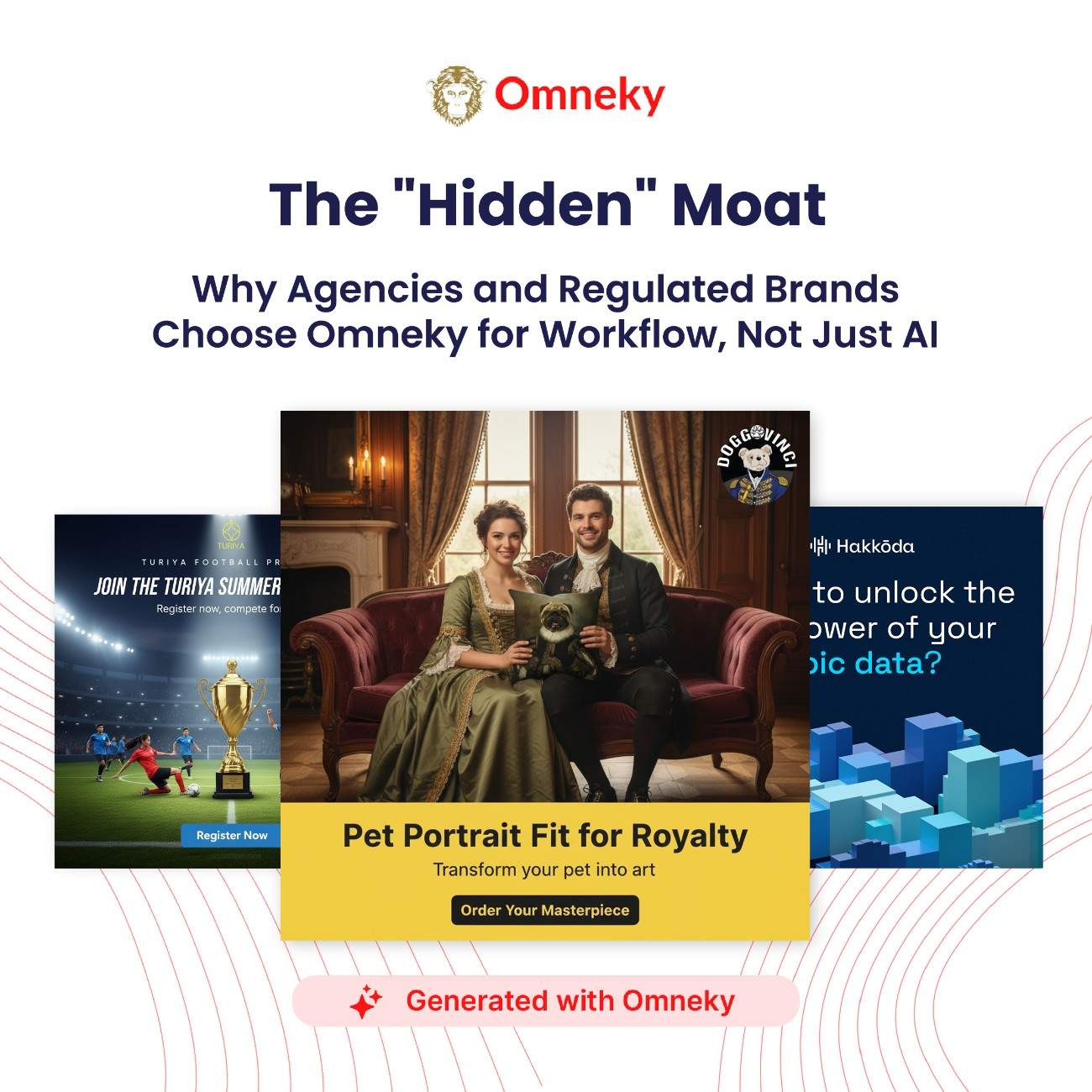Generative AI: How to Stay Ahead of the Curve in Digital Advertising
The blog discusses the transformative power of generative AI in digital advertising, highlighting its ability to create personalized and impactful ad campaigns. It explores the benefits and future trends of generative AI, emphasizing its potential to enhance marketing efficiency and customer experiences.

With millions of businesses vying for consumers' attention, engaging your target audience is no small feat. Innovation is key to staying ahead of the curve—and generative AI is emerging as a game-changer.
Generative AI in digital advertising empowers you to create captivating ad campaigns efficiently and precisely. With elements personalized for your target consumers, every ad is meaningful and leaves a lasting impression.
Let’s dig into the transformative power of generative AI in digital advertising to help you tap into limitless creativity and stand out from the crowd.
Understanding Generative AI in Digital Advertising: What You Need to Know
A recent Mckinsey report revealed that 90% of commercial leaders plan to use generative AI solutions regularly in the coming two years. With particular benefits in customer experience, productivity, and growth, it can give marketing and sales teams a new competitive edge.

Generative AI can leverage top-line performance by providing sales teams with the right customer insights to capture demand. It eliminates and automates many mundane sales tasks; in turn, costs decrease—and sales teams gain more time to spend building valuable customer relationships.
Personalization, however, gives teams the edge in any sales scenario. At the most granular level, consumer insights enable highly relevant and targeted hyper-personalized marketing and sales offerings.
In this respect, generative AI surpasses traditional lead identification and targeting methods. It segments and targets relevant audiences by leveraging patterns in customer and market data. This allows businesses to analyze and identify high-quality leads for more effective campaigns efficiently.
Generative AI further leverages customer behavior, preferences, and demographics to produce personalized content and messaging. This can encompass:
- Automated follow-up emails
- Contextual chatbot support
- 24/7 virtual assistant services
- Tailored advice, reminders, and feedback to enhance engagement and conversion
Gen AI also optimizes marketing strategies through A/B testing of elements like page layouts, ad copy, and SEO, with real-time recommendations for improved ROI. Sales leadership can also view continuous churn modeling and dynamic customer-journey mapping to identify and optimize touchpoints.
How Can You Leverage Generative AI for Ad Creation?
While there are many use cases, let’s look at a few key applications to leverage gen AI for impactful ad creation and improved marketing results.
Content Creation
Through AI-powered chatbots, generative AI uses natural language processing (NLP) algorithms to craft unique and personalized content based on previous customer interactions with the brand. Similarly, algorithms can create product reviews and descriptions to boost website SEO.
Video and Image Creation
Generative AI crafts tailored videos and images for customers. For instance, AI video ads can be based on consumer browsing habits, purchase records, and demographic data. Similarly, image recognition creates customized product images that suit customers’ needs.
Ad Optimization
AI tools generate multiple versions of images, copy, and headlines and test them against each other to determine the most impactful combination. This significantly improves campaign ROI and reduces CPC.
Predictive Analytics
Algorithms use predictive analytics to forecast customer behavior and generate personalized product recommendations based on what they are most likely to buy in the future.

Implementing Generative AI in Your Advertising Strategy: Key Considerations and Best Practices
By following these best practices, you can start your AI journey and leverage this powerful technology to boost your marketing efficiency and effectiveness.
1. Define Clear Objectives
Define a clear and measurable goal for every advertising campaign. Objectives can include increasing engagement, conversions, getting consumers to take a survey, watch a video, send a call-back request, or take another specific action.
In addition, pinpoint ways in which you can measure the achievement of your goals. Identify KPIs to track your outcomes, such as click-through rates, email opens, call-back requests, and bounce rates.
2. Choose the Right Tools
While various AI tools are available, choosing one that aligns with your goals is important. The right choice will simplify and enhance processes rather than complicate and confuse them. In addition, it should work with the most significant and relevant data points for your use case.
Omneky’s generative AI tools are specifically designed for advertising, featuring creative generation, optimization through testing, and easy-to-interpret data analysis of key performance metrics.
3. Monitor Output Quality
In step one, you identified the specific objective of your campaign. Now it’s time to set metrics indicating the effectiveness of AI-generated content in achieving these outcomes.
There are various methods and metrics to consider when evaluating AI output quality in advertising, including:
Domain-Specific Metrics
In general, you can consider AI output quality good as long as the content serves the purpose of the given context. While ‘fit-for-use’ can be a subjective concept, defining relevant context-dependent (or domain-specific) metrics helps to make it qualitative.
Generative AI models can be optimized for advertising success and high ROI by linking metrics to objectives. For example, when aiming to generate effective ad copy, consider metrics such as click-through rates, conversion rates, and customer engagement. Meanwhile, metrics for upholding brand consistency include brand recall and brand perception surveys.
Human Evaluation
While objective metrics are key, incorporating subjective evaluation from experts also offers valuable insights. Where AI lacks emotional connections, humans can improve content relevance, coherence, connection through creativity, and ensure adherence to brand identity guidelines.
A/B Testing
Generative AI can enhance marketing campaigns by generating multiple versions of ads and testing them in real time. This allows you to find the most effective combination of images, ad copy, and headlines. In addition, machine learning algorithms can analyze how ads perform across different platforms and provide recommendations on how to progress ad performance and user engagement.
User Feedback and Sentiment Analysis
Leveraging surveys, interviews, or sentiment analyses of social media responses provides insight into generated content quality, relevance, and effectiveness from your users—who are ultimately your most important evaluators.
4. Stay Abreast of Industry Trends and Regulations
The implementation of generative AI in advertising (and in general) raises concerns regarding data accuracy and privacy. While there are ongoing initiatives to establish regulatory frameworks for the technology, the continuous and rapid evolution of generative AI disrupts the efficacy of these regulations.
In 2021, the European Union introduced the AI Act with the aim of regulating its use. But the technology has advanced in leaps and bounds since then, creating significant intellectual property implications.
Unauthorized use of someone's name, image, or likeness can violate their publicity or personality rights. Companies must adhere to data protection laws such as GDPR when collecting and processing images and video data.
As generative AI technology continues to develop, it’s inevitable that authorities will implement new regulations to govern its use in advertising. Advertisers need to stay informed and ensure consistent compliance with any new regulatory frameworks to avoid legal disputes, a damaged reputation, and financial loss.

The Future of Generative AI in Digital Advertising: Trends and Predictions
Want to stay ahead of the game? Keep an eye on these emerging AI trends in marketing and sales.
Increased Use of Predictive Analytics
Although predictive analytics is not entirely new, generative AI is taking this marketing trend to new heights. With improved data collection and analytics, your AI tools can produce increasingly detailed and personalized content right on target with individuals’ needs and preferences.
Marketing Automation
The automation of content design, ad creatives, marketing tasks, ad placements, and budget allocation will only continue to develop. This will further increase efficiency, improve accuracy, and reduce costs.
Smarter Content Generation & Full Cycle Personalization
Generative AI algorithms leverage existing data—such as text, images, videos, and audio—to produce entirely novel content. As this trend evolves, personalization will extend far beyond advertising into the entire customer journey.
How to Get Started with Generative AI in Your Digital Advertising Strategy
Generative AI is one of the most prevalent new marketing trends in 2023. Businesses are experiencing improved marketing results at a lower cost, while consumers gain valuable, personalized, and engaging experiences.
Omneky can help you start with generative AI in your digital advertising strategy. Thanks to state-of-the-art deep learning, Omneky helps you target each viewer with ads made just for them. From creative generation and optimized ad distribution to performance analytics and task automation, our all-in-one platform allows you to reduce costs, increase sales, and stay one step ahead of competitors.
Learn more today with an Omneky demo and transform your team into innovative market leaders that drive results.



